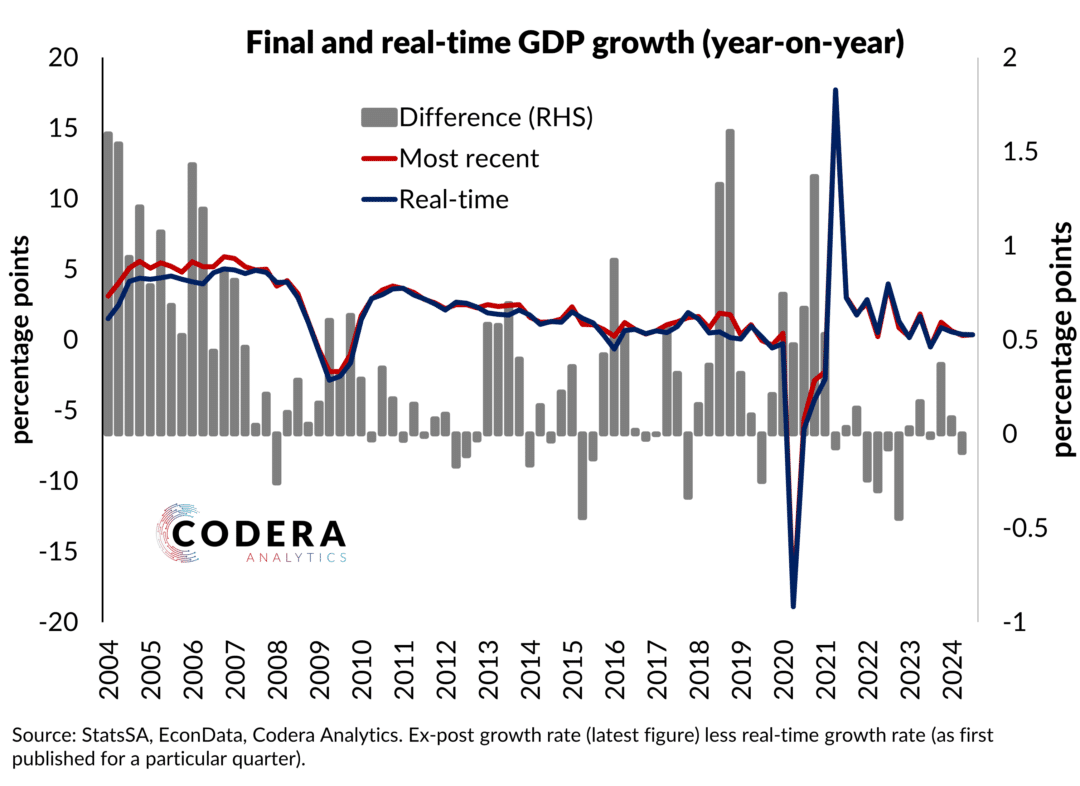GDP revisions affect judgements about the state of the economy at particular points in time (see recent estimates here) and assessments of the usefulness of economic and financial indicators for forecasting GDP. Our EconData platform makes it possible to easily assess revisions in publicly available macroeconomic and financial data. Today’s post shows that revisions have affected the implied level of output, as well as the growth rate of the economy. As we showed in an earlier post, the upward revision to the level of South Africa’s GDP (by 11% for 2020, for example) saw the ratio of government debt to GDP be revised down by around 10 percentage points between Budget Review 2022 compared to Budget Review 2021 for fiscal year 2020/21.
First releases have generally under-estimated final vintage GDP growth (by a median of 0.2 percentage points for year-on-year and 0.3 quarter-on-quarter annualised). It is worth pointing out that provincial GDP (which is only published at an annual frequency) revisions have been much larger for some provinces.



